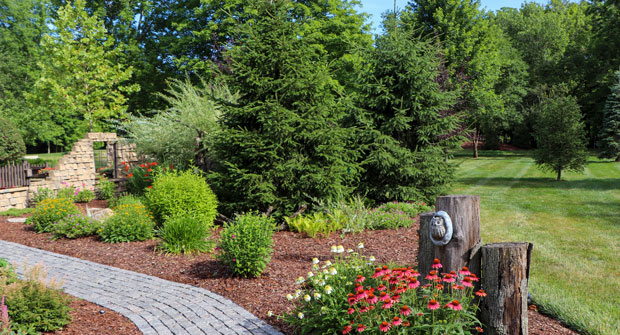
Drew Gronholz, president of River City Lawnscape in La Crosse, Wis., says 2023 wasn’t as good of a year as he would have liked, primarily for one reason — labor. The year started off strong with a good snow season for his snow, maintenance and design/build and installation firm, but then …
“We didn’t get our H-2B guys until the third week of June, so it put us back on construction and installation,” he says. “We had to change focus with the staff we had on hand. We focused on maintenance. When the H-2B guys did arrive, it was all hands on deck, getting everything done as much as possible.”
Gronholz adds that his H-2B guest workers have otherwise been consistent over the years, and have even become like a family. Because of this lack of labor at the most inopportune time, Gronholz says his company will just barely fall short of its revenue goal for 2023.
Jack Jostes, CEO of Ramblin Jackson, surveyed his clients to gauge how their years went. While the responses varied based on revenue, most respondents said recruiting employees was a big challenge, followed by generating quality leads.
“Companies below $6 million said generating quality leads was the biggest challenge,” he says. “Larger companies over $6 million said recruiting quality employees was their biggest challenge.”
Jostes says this information is nothing new, as labor woes continue to plague the green industry. That’s why it’s critical for businesses to focus on culture, pay, benefits and training, he says.
“If you don’t spend money on it, if you don’t improve yourself, honestly being a good place to work, you’re probably going to continue to have those issues,” he says.
Jeff Domenick, CEO of KeyServ, said it experienced a 22 percent labor cost increase last year. Crew members now make $19 or $20 an hour in most markets.
Tim Gardiner, president of Meridian Landscaping, says the company has always had a history of providing strong benefits to its workforce. But a couple of years ago the company initiated a loan program in conjunction with a savings program. Employees pay $25 into the program and can borrow up to $2,500.
“When we would do our team meeting, you would ask them what the most important benefit and they would always say the loan program,” he says. “It’s helped us retain employees.”
Gardiner says Meridian will discuss the company’s employee benefits with clients as a way to explain any increases in pricing.
“Sometimes it’s a matter of just going and talking to customers and saying, ‘Hey, here’s an increase. By the way, here’s why,’” he says, “‘These are very educated, full-time people. We’re training them, we’re doing English class immersion. We’re providing them a foundation to grow.’ If you have good people, everything follows naturally.”
A manufacturer’s perspective
Rocky Reynolds, vice president of sales and marketing for Senix Tools, says this year was an interesting one for his business. Senix used this year to market its handheld and battery-powered tools to the green industry. One thing he’s heard is how challenging the year has been for dealers and distributors.
“Retailers and manufacturers alike are still dealing with the pandemic hangover, as I call it,” he says. “The supply chain was so disruptive during that period of time that everyone — including the manufacturers — just built enormous amounts of inventory. They could throw anything in the retail store during those two, two and a half years and it was selling. As the consumers were buying, retailers were trying not to be out of stock of different categories.”
And then, just like that, Reynolds says the faucet turned off.
“What we were left with was inventory that’s already produced, some has already been paid for by the retailers,” he says. “We’re all stuck in a situation that’s going to take 18, 24, 36 months to level back to where it was pre-pandemic. Everyone this year really has been working through an enormous amount of inventory that we have to get out of the pipeline so that we can bring new products to market.”
Reynolds says this backlog complicates Senix and other manufacturers’ ability to continue to introduce new technology and solutions for the professional landscape contractor.
“Our product pipeline doesn’t stop,” he says. “We may slow down, we may push some projects back for six months, eight months, something like that, but it’s not going to stop.”

